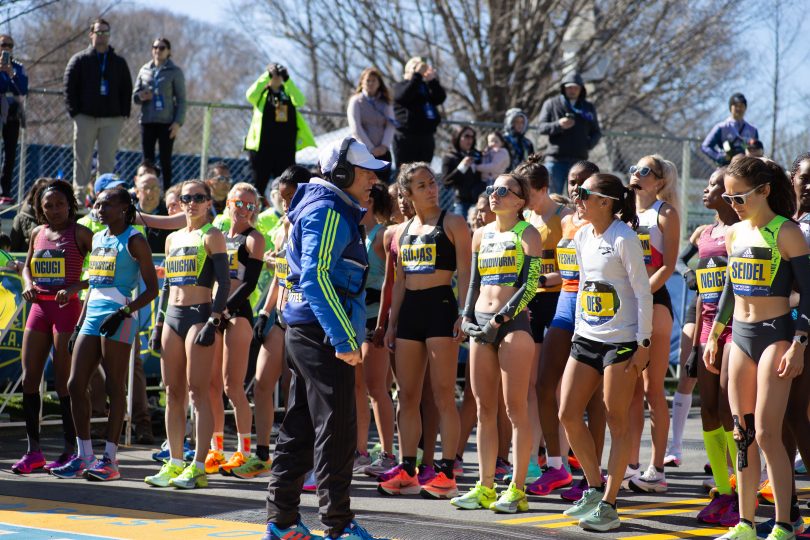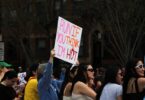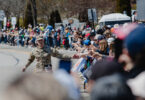By Jared Jacob, Belle Fraser and Lina Levein
Boston University News Service
The word marathon may conjure up thoughts of a grueling run with determined individuals who would stop at nothing to achieve their goals. Twenty-six miles seems lengthy enough, but who decided that we needed an extra .2 to make it a true marathon? It wasn’t always 26.2 miles; heck, it wasn’t always 26 miles.
The history of the marathon can be traced back to ancient Greece in the city of Marathon where in 490 B.C.E. a battle between the Athenians and Spartans combined their forces to defeat the Persian army.
“Having this origin story emerge from Greek legend –– no other running event has that kind of an origin story –– inevitably, if you steep things in history… I think that is going to attract people to it,” Boston.com reports.
One of the more popular versions of accounts comes from the writer Lucian. He details how the Greeks sent out a runner from Marathon to Athens to send word of the battle victory. The messenger ran 40 kilometers (25 miles) to deliver the news, and to commemorate his journey, the first Olympic Marathon in 1896 was set to 25 miles.
However, the Greek writer Herodotus wrote of a different account, and it is believed that this was the correct retelling of the story. He stated that after the Persian army was defeated, the Athenians trekked 25 miles back home in full armor at a quick pace to make sure the Persian ships didn’t try to attack their city while it lay defenseless.
The length of the Marathon remained at around 25 miles until England’s royal family had other plans at the 1908 Olympic games in London.
So it goes, Queen Alexandra made a special request that the runners start the marathon race on the lawn at Windsor Castle so the young royals could see the beginning of the race from their nursery window. The Queen also insisted the marathon end at the Olympic stadium’s royal box, extending the total race distance to 26.2 miles.
“The marathon distance increased from 40 kilometers (24.85 miles) to 42 kilometers (26.2 miles) so the royal family could watch both the start of the race at Windsor Castle and the finish from the royal box inside White City Stadium. That accounted for the extra added-on distance,” Paul Clerici, a local historian, runner and author of numerous Boston Marathon history books said.
While the concrete details of the story are contested between historians, the 1908 race drew much attention and became the most famous marathon of the time, playing into the case to keep the 26.2 mile length.
“At a very basic level, if they had made it some round number, we probably wouldn’t be talking about this,” Bird said. “The fact that they made it 26 miles, 385 yards… that just looks like a weirdly precise number for the length of a race. That just inspires curiosity and conversation amongst people.”
Beyond the change in mileage, the London Olympic Marathon had a historic finish. Dorando Pietri, an Italian runner, was running towards a gold medal as he secured a late lead at the stadium; however, he took the wrong turn down the track and eventually collapsed from exhaustion.
Pietri was helped across the finish line by two race officials and ended up finishing in first place. His victory was soon protested by the U.S. team who had runner Johnny Hayes come in second place, without assistance. The gold medal was soon awarded to Hayes, while Pietri still received a special cup from Queen Alexandra.
It took 13 years after the 1908 London Olympics for the length of the marathon to be officially standardized to 26.2 miles. The Boston Marathon –– which started as the world’s oldest race in 1887 –– adapted to this distance, and it’s been the same ever since.
One of the reasons why the marathon made its way to Boston was because of two local runners in the first international Olympic games in Athens 1896, Clerici said.
“The Battle of Marathon in Greece is important for many reasons… and the direct connection to Boston is that part of the U.S. Olympic Team were members of the Boston Athletic Association (B.A.A.), who loved the marathon and returned to Boston with the idea of adding it to their B.A.A. Games,” Clerici said. “The first Boston Marathon was subsequently held in 1897, a year after the 1896 Modern Olympic Games.”
While the Boston Marathon times aren’t recognized as world records due to its non-loop route, there’s still a lot of prestige around the race. It’s one of the six major world marathons and an event that many runners strive to participate in.
“It is still deemed one of the majors when it comes to world marathons,” Bird said. “All of the top runners recognize it as a race they want to be in. It’s a prestigious thing to win.”
With the 127th Boston Marathon approaching on April 17, the race’s roots remain in ancient Greece as the lengthy run continues to grow in popularity and meaning.
“The Boston Marathon is more than just a footrace. It is part of the communities through which it runs in ways well beyond the race itself,” Clerici said. “The world tunes in and turns out for the Boston Marathon, which has also become a fixture in the national consciousness year-round.”





